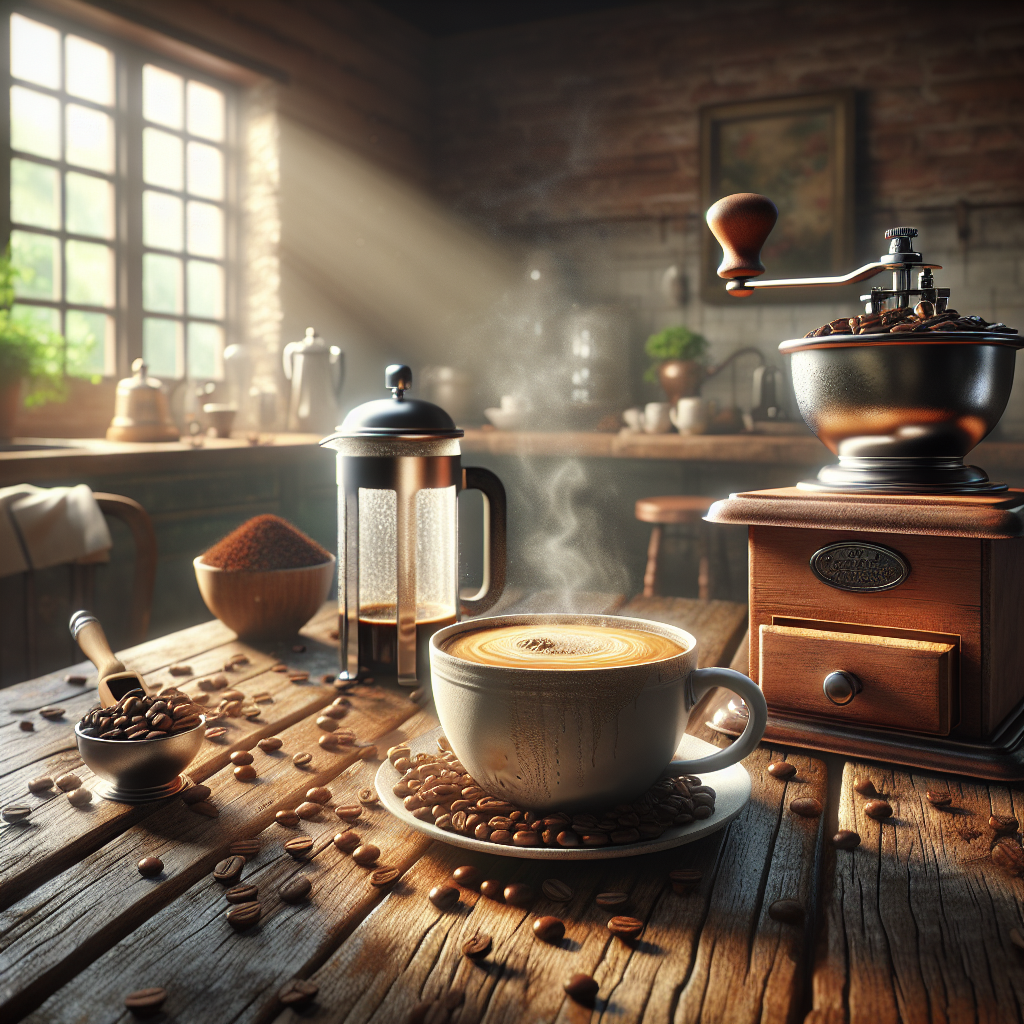“`html
How to Make Great Coffee at Home: A Comprehensive Guide
For coffee enthusiasts, mastering the art of brewing great coffee at home can be a rewarding journey. By focusing on key elements such as quality beans, correct brewing methods, and proper equipment, you can create a rich and satisfying coffee experience. Below, we explore everything you need to know to elevate your coffee game at home.
| Brewing Method | Pros | Cons | Recommended Equipment |
|---|---|---|---|
| French Press | Rich flavor, full-bodied | Can be gritty, requires more cleanup | French press, kettle |
| Pour Over | Control over brewing time, clean taste | Requires practice, can be time-consuming | Pour-over cone, filter, kettle |
| Aeropress | Fast, portable, versatile | Limited capacity, specific to taste | Aeropress, kettle, filter |
| Moka Pot | Strong coffee, rich flavor | Requires stovetop, can be tricky to perfect | Moka pot, stove |
1. Start with High-Quality Beans
Investing in high-quality coffee beans is the first step toward brewing delightful coffee. Opt for freshly roasted, whole beans from reputable roasters to ensure the best flavor and aroma.
- Understanding the differences between Arabica and Robusta beans can guide you in choosing beans that align with your flavor preferences.
- Pay attention to coffee bean labels, which indicate the bean origin, roast date, and flavor notes. Freshly roasted beans generally offer superior taste compared to pre-ground coffee.
- Establish relationships with specialty coffee shops or roasters who can provide valuable information on the best beans available.
For more in-depth tips on finding quality beans, visit other coffee FAQs here.
2. Grind Just Before Brewing
To preserve the freshness and flavor of your coffee, it’s crucial to grind your coffee beans just before brewing.
- Using a burr grinder over a blade grinder ensures a consistent grind size, which is key for even extraction.
- Grind size should correspond to your brewing method: extra coarse for cold brew, coarse for French press, medium-coarse for Chemex, and fine for espresso.
- Proper grinder maintenance, including regular cleaning, helps eliminate residual oils and flavors.
3. Experiment with Brewing Methods
Different brewing methods bring out unique flavors and characteristics in coffee. Here’s a comparison of popular methods:
- French Press: Produces rich and full-bodied coffee but can be gritty and requires more cleanup.
- Pour Over: Offers control over brewing time and a clean taste but is time-consuming and requires practice.
- Aeropress: Fast, portable, and versatile, but has limited capacity and is specific to individual tastes.
- Moka Pot: Delivers strong, rich coffee but requires a stovetop and can be tricky to perfect.
Experiment with these methods to find your perfect brew. A detailed guide on these brewing techniques can be found here.
4. Use Proper Water Temperature
The water temperature significantly impacts the extraction and flavor of your coffee. Aim for a temperature between 195°F and 205°F.
- Using a thermometer to check the water temperature can help achieve better consistency.
- If you are at a high altitude, remember that water boils at lower temperatures, which can affect brewing.
- Adjust your water temperature based on the coffee beans’ roast level and origin.
5. Maintain the Right Coffee-to-Water Ratio
The coffee-to-water ratio is another crucial factor in brewing great coffee. A common starting point is 1 to 2 tablespoons of coffee for every 6 ounces of water.
- Adjust the ratio to match your personal taste preferences – stronger or weaker as desired.
- Consistently measure both coffee and water to maintain your desired strength.
- Different brewing methods might require adjusting the ratio slightly for optimal results.
6. Brew with the Lid Open (for Some Methods)
Certain brewing methods, such as Pour Over and some French Press techniques, benefit from brewing with the lid open. This allows for better extraction and can enhance the flavor profile.
- Aeration and exposure to air during brewing can positively impact the taste of your coffee.
- Monitor the brewing process closely to ensure proper extraction.
7. Keep Your Equipment Clean
Clean equipment is essential for brewing great coffee. Residual oils and coffee grounds can negatively affect the taste and aroma.
- Regularly clean your coffee maker, grinders, and other brewing tools according to the manufacturer’s instructions.
- Using recommended cleaning products and tools can help maintain cleanliness and performance.
- Deep clean your equipment periodically to prevent buildup and maintain quality.
8. Store Coffee Beans Properly
Proper storage of coffee beans ensures they stay fresh and flavorful.
- Store beans in an airtight container in a cool, dark place away from direct light and moisture.
- Avoid storing beans in the freezer or refrigerator, as this can introduce moisture and negatively affect flavor.
- Optimal storage conditions help maintain the beans’ freshness and prevent them from going stale.
9. Use Filtered Water
The quality of water used in brewing coffee plays a significant role in the final taste.
- Using filtered water helps eliminate impurities that might affect the flavor of your coffee.
- Test and adjust the water hardness to ensure ideal brewing conditions.
- Consider investing in a good water filtration system for home use.
10. Tweak Your Technique
Don’t hesitate to experiment with different brewing variables to find your perfect cup.
- Keep brewing notes to record changes in grind size, water temperature, and brewing time.
- Use a timer to control extraction time accurately.
- Adjust your brewing methods based on the type and roast of your coffee.
For further insights into coffee brewing techniques, explore our other coffee FAQs here.
By following these detailed steps, you can significantly enhance your home coffee brewing experience. Don’t forget to browse our blog for more informative content and detailed coffee tips!
“`
Shop at Breville now!
https://breville.oie8.net/oqDqrE
Shop Coffee Machine at Amazon now!
Click here!





